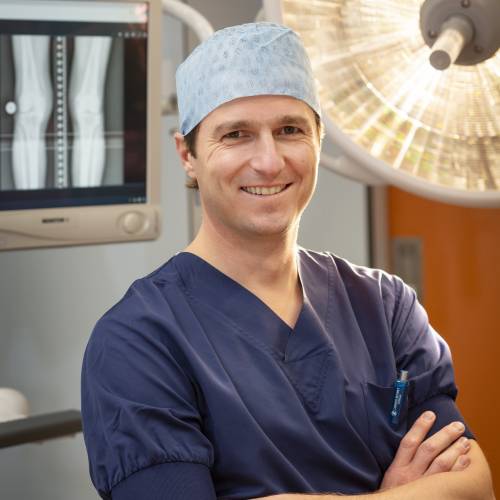Description
Objective
The objective of this study was to check the feasibility of using a robotic system in revising partial knee replacements to total knee replacements. Using robotic guidance has shown to increase implant position precision in primary total and partial knee replacement. Limited data is available concerning robotic guidance in revision knee arthroplasty.
Materials and methods
Between May 2022 and September 2023 a consecutive series of 22 partial knee replacements were revised to total knee replacements using the ROSA robotic system. Landmarking and ligamentous assessment was performed with the prothesis in situ. Errors in the initial prothesis were taken into account and corrected. An 8-step balancing technique was used. Whenever the initial full leg X-ray was available the aim was to reconstruct the initial joint line orientation and height. Patients were follow-up using a prospective database collecting Oxford Knee Score, VAS pain score and satisfaction rate.
Results
The mean interval between index and revision was 8.9 years. The initial procedure was patellofemoral replacement (PFJ) in 4 cases, lateral unicompartmental knee replacement (UKR) in 2 cases (all fixed bearing) and medial UKR in 17 cases (12 fixed, 5 mobile bearing). Progression and poly-wear (each 6 cases) were the main reasons for revision.
A primary knee system could be used in all but one cases. The level of constraint was CR in all 4 PFJ revisions and PS in all other cases. Mean insert thickness was 11 (range 10-13). In 4 cases a release of the lateral patellar retinaculum was performed, no other releases were necessary.
Mean pre-op Oxford Knee Score was 14, mean pre-op VAS pain score was 7. At 4 months follow-up mean OKS was 34 and VAS pain score 2.5. The mean deviation between planned and executed knee angles (MPTA, LDFA, HKA) was < 1°.
Conclusion
Robotic guidance has the potential to increase precision in revision knee arthroplasty. This study has shown that it can be used in revision from partial to total knee arthroplasty. Further research on this topic is needed.




